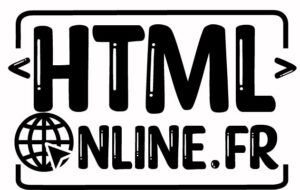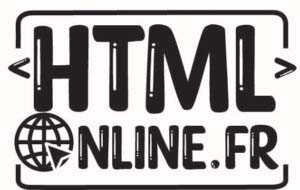What is Semantic Analysis? Definition, Examples, & Applications In 2023
It is normally based on external knowledge sources and can also be based on machine learning methods [36, 130–133]. When looking at the external knowledge sources used in semantics-concerned text mining studies (Fig. 7), WordNet is the most used source. This lexical resource is cited by 29.9% of the studies that uses information beyond the text data. WordNet can be used to create or expand the current set of features for subsequent text classification or clustering.
Reshadat and Feizi-Derakhshi [19] present several semantic similarity measures based on external knowledge sources (specially WordNet and MeSH) and a review of comparison results from previous studies. Section 2 surveys relevant works on semantic augmentation methods for classification problems, as well as the main techniques for enriching word embeddings with semantic information. In Section 3, we elaborate on our method, describing (a) the embeddings generation, (b) the semantic information extraction, and (c) the vector augmentation steps. Section 4 presents the experimental study that evaluates the performance of our workflow and compares it to the state of the art in the field. We conclude the paper with a summary of our key findings along with directions for future work in Section 5. Today, machine learning algorithms and NLP (natural language processing) technologies are the motors of semantic analysis tools.
Textual analysis in literary studies
The semantic analysis method begins with a language-independent step of analyzing the set of words in the text to understand their meanings. This step is termed ‘lexical semantics‘ and refers to fetching the dictionary definition for the words in the text. Each element is designated a grammatical role, and the whole structure is processed to cut down on any confusion caused by ambiguous words having multiple meanings. The semantic analysis process begins by studying and analyzing the dictionary definitions and meanings of individual words also referred to as lexical semantics.
As examples of semantics-related subjects, we can mention representation of meaning, semantic parsing and interpretation, word sense disambiguation, and coreference resolution. Nevertheless, the focus of this paper is not on semantics but on semantics-concerned text mining studies. This paper aims to point some directions to the reader who is interested in semantics-concerned text mining researches. Many studies in the scientific literature (Aas and Eikvil, 1999, Aggarwal and Zhai, 2012, Berry, 2004, Hotho et al., 2005, Sebastiani, 2005) focus on traditional methods for text mining. Furthermore, there are also surveys that focus on particular type of classification algorithms such as kernel methods (Campbell, 2002, Jäkel et al., 2007). There are also surveys about the techniques of semantic similarity measurement between words (Elavarasi et al., 2014, Soleimandarabi et al., 2015, Zhang et al., 2012).
A Review of Principal Components Analysis
The main differences between a traditional systematic review and a systematic mapping are their breadth and depth. While a systematic review deeply analyzes a low number of primary studies, in a systematic mapping a wider number of studies are analyzed, but less detailed. Thus, the search terms of a systematic mapping are broader and the results are usually presented through graphs. As we enter the era of ‘data explosion,’ it is vital for organizations to optimize this excess yet valuable data and derive valuable insights to drive their business goals. Semantic analysis allows organizations to interpret the meaning of the text and extract critical information from unstructured data. Semantic-enhanced machine learning tools are vital natural language processing components that boost decision-making and improve the overall customer experience.
A semantic analysis-driven customer requirements mining method for product conceptual design Scientific Reports – Nature.com
A semantic analysis-driven customer requirements mining method for product conceptual design Scientific Reports.
Posted: Thu, 16 Jun 2022 07:00:00 GMT [source]
Semantic analysis techniques and tools allow automated text classification or tickets, freeing the concerned staff from mundane and repetitive tasks. In the larger context, this enables agents to focus on the prioritization of urgent matters semantic text analysis and deal with them on an immediate basis. It also shortens response time considerably, which keeps customers satisfied and happy. The semantic analysis uses two distinct techniques to obtain information from text or corpus of data.
They also describe and compare biomedical search engines, in the context of information retrieval, literature retrieval, result processing, knowledge retrieval, semantic processing, and integration of external tools. The authors argue that search engines must also be able to find results that are indirectly related to the user’s keywords, considering the semantics and relationships between possible search results. Wimalasuriya and Dou [17], Bharathi and Venkatesan [18], and Reshadat and Feizi-Derakhshi [19] consider the use of external knowledge sources (e.g., ontology or thesaurus) in the text mining process, each one dealing with a specific task. Wimalasuriya and Dou [17] present a detailed literature review of ontology-based information extraction. The authors define the recent information extraction subfield, named ontology-based information extraction (OBIE), identifying key characteristics of the OBIE systems that differentiate them from general information extraction systems. Bharathi and Venkatesan [18] present a brief description of several studies that use external knowledge sources as background knowledge for document clustering.

Following this, the relationship between words in a sentence is examined to provide clear understanding of the context. MonkeyLearn makes it simple for you to get started with automated semantic analysis tools. Using a low-code UI, you can create models to automatically analyze your text for semantics and perform techniques like sentiment and topic analysis, or keyword extraction, in just a few simple steps.
3 Training
Distributional information pertain to statistics from the context of a word, while relational information utilizes semantic relationships such as synonymy and hypernymy. Semantic analysis can also benefit SEO (search engine optimisation) by helping to decode the content of a users’ Google searches and to be able to offer optimised and correctly referenced content. The goal is to boost traffic, all while improving the relevance of results for the user. As such, semantic analysis helps position the content of a website based on a number of specific keywords (with expressions like “long tail” keywords) in order to multiply the available entry points to a certain page.

